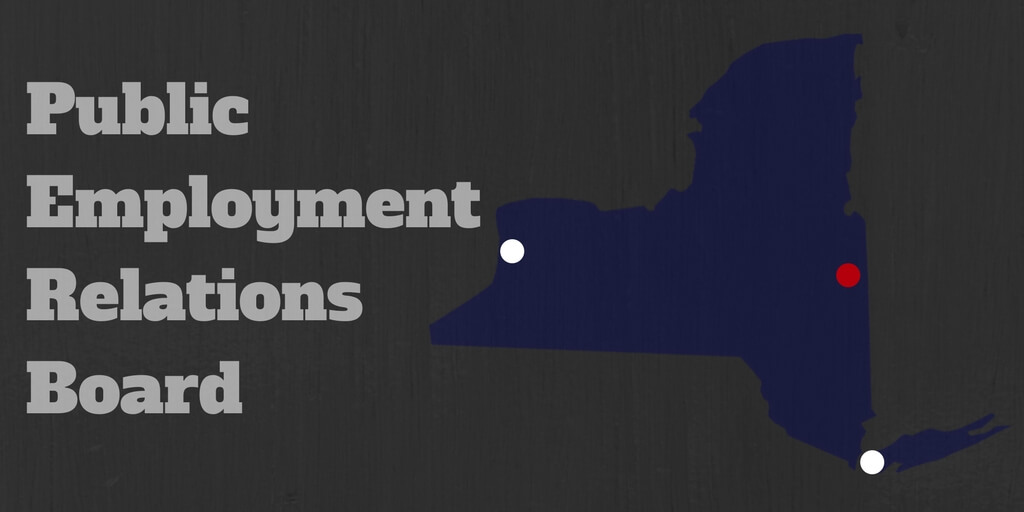Through the State Budget bill signed by Governor Andrew Cuomo on April 12, 2018, New York has new legal protections for unions that represent government employees. These measures seek to protect public sector unions from the potential implications of the Supreme Court’s upcoming decision in the case of Janus v. AFSCME. Many expect that decision to allow public employees to refuse to financially support the unions that represent them in collective bargaining.
What’s at Stake in Janus?
I have recently described what Janus may mean for New York’s public sector unions here.
The U.S. Supreme Court heard arguments in the case on February 27, 2018. Its decision will likely come out this spring.
Existing Supreme Court precedent holds that public employees cannot be required to pay for unions’ political activities. However, they can be required to contribute to the union’s actual costs of contract negotiation and administration.
Illinois state employee Mark Janus is asking the Court to change that standard. He wants the Court to rule that, under the First Amendment, public employees cannot be required to fund unions against their will. This outcome could threaten public sector unions’ ability to raise sufficient funds to perform their day-to-day operations.
New York Legislative Measures
Without waiting for the decision in Janus, the New York State Legislature has enacted protections seeking to give public sector unions greater leverage over employees who might consider opting out of union membership.
Modification of Dues Deduction Requirements
Before these amendments, New York’s Civil Service Law required public employers to deduct union dues from employees’ paychecks “upon presentation of dues deduction authorization cards signed by individual employees.”
The Legislature has added considerable additional language to that requirement addressing time limitations, forms and means of authorizations, and employee revocation.
The law now requires employers to begin union dues deductions within 30 days of receiving proof of a signed authorization. The employer must then continue to make the deduction until either the employee revokes membership in the union “in writing in accordance with the terms of the signed authorization” or ends employment. Previously, the law permitted an employee to end the dues deductions by submitting written notice of withdrawal of the dues authorization.
Notably, the law now also provides that if an employee leaves and returns to employment within a year, then their prior authorization will remain in effect.
Notification of New Employees
A new provision of the Civil Service Law requires public employers to notify the applicable union within 30 days of hiring, rehiring, promoting, or transferring an employee into a bargaining unit.
The notice to the union must include the employee’s:
- name;
- address;
- job title;
- employing agency;
- department or other operating unit; and
- work location.
This information will enable the union to contact the employee for purposes of encouraging union membership and signing of a dues deduction authorization card.
Meeting with New Employees
In case providing the employee’s information to the union isn’t enough, the law now actually compels public employers to make their employees available, on work time, to meet with union representatives. Employers must allow this within 30 days of providing the information above.
The union representing the employee’s bargaining unit may meet with the employee “for a reasonable amount of time … without charge to leave credits.” The union must arrange the meeting time with the employer.
Duty of Fair Representation
Before this legislation, public sector unions owed a general “duty of fair representation” to all employees in the bargaining unit they represent, including employees who chose not to join the union. Now the law allows a union to “limit[] its services to and representation of non-members.” This limits the duty of fair representation to “the negotiation or enforcement of the terms of an agreement with the public employer.”
In more detail, the law explains this to mean that public sector unions do not have to represent non-members:
- during questioning by the employer;
- in statutory or administrative proceedings or to enforce statutory or regulatory rights; or
- in any stage of a grievance, arbitration, or other contractual process concerning the evaluation or discipline of a public employee where the non-member is permitted to proceed without the employee organization and be represented by his or her own advocate.
The law also expressly permits public sector unions to limit legal, economic, or job-related services or benefits beyond those provided in the collective bargaining agreement only to union members.
Impact on Public Sector Unions
It is hard to guess how these preemptive measures will hold up following the Supreme Court’s ruling in Janus. In addition to the above substantive amendments, the Legislature included two sections in the law recognizing the potential that some of these requirements could be found unconstitutional. If so, the law provides, the remainder of the legal requirements would remain in effect.
But the intent of the legislation is clear. It seeks to protect New York’s public sector unions against federal limitations. To that end, Governor Cuomo announced, upon signing the legislation:
“Too often, and at the hands of this federal administration, we are seeing the labor movement going backwards. In New York it is a different story, and our efforts to protect working men and women are moving labor forward, making the workplace fairer and more just than ever before. This action sends a clear message to the rest of the nation: we will not let this federal administration silence New York’s working class, we will support every voice in every community and in every industry, and we will do everything in our power to protect the right to achieve the American Dream.”
Impact on Public Employers
Without even knowing what further impact the Janus decision will have, it is too early to anticipate the ultimate impact on employers. In many cases, these changes probably will not have an immediate effect on existing bargaining units. Many employees will likely continue to support their unions, who will continue to represent them and others in their bargaining unit.
Some employers would probably be happy if unions faded out of their workplaces. And this may happen over time. But other employers would regret seeing one union leave to be replaced by an unfamiliar one.
If nothing else, the release from the duty of fair representation, if legally upheld, may benefit employers as well as unions. It could result in fewer grievances and less litigation where unions decline to fight on behalf of non-member employees. On the other hand, these employees may still be able to arbitrate or litigate on their own, with or without legal representation.


